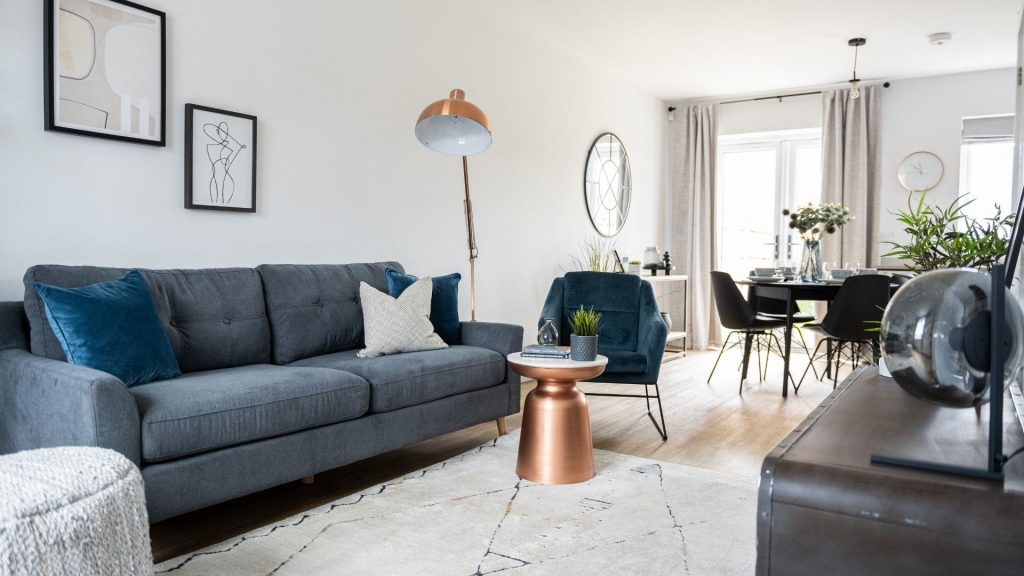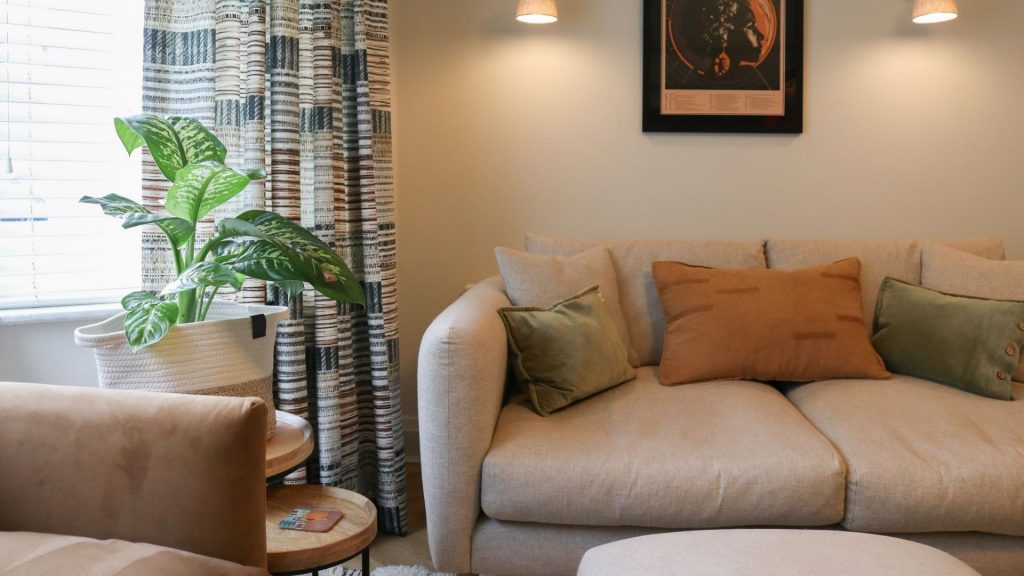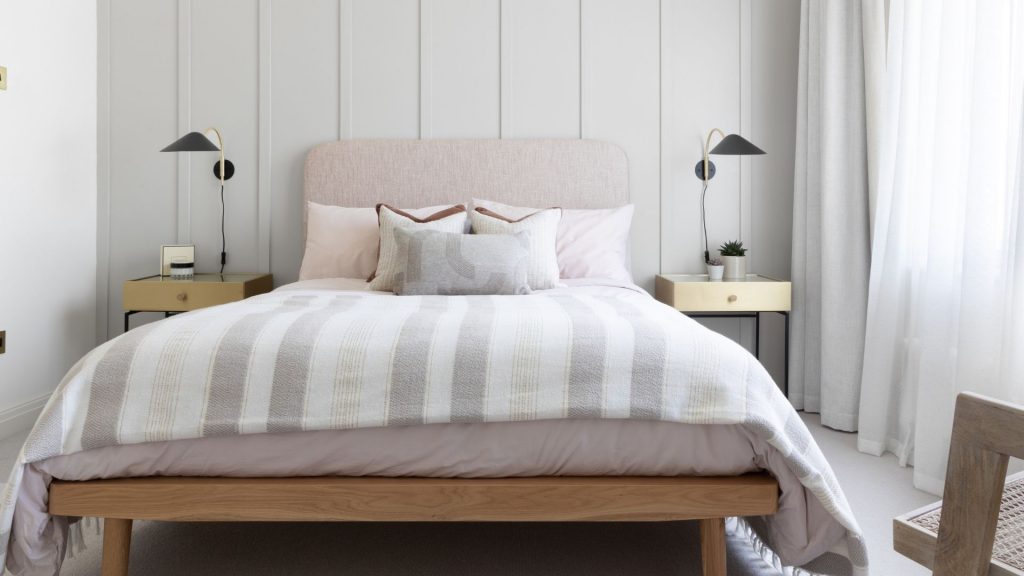Making a mistake when it comes to interior design can lead to a space feeling disjointed, impractical, or uncomfortable. We see people experiencing the same issues time and time again – whether it’s poor lighting choices, awkward layouts, or playing it too safe with design.
Many of these mistakes come down to improper planning and timing. Some can be expensive to correct, while others lead to long-term frustrations that could have been avoided.
But with a little foresight and the right guidance, you can sidestep these mishaps entirely and enjoy a smooth experience when renovating your home or commercial property.
Our designers have seen it all. So, to help you avoid the biggest interior design mistakes, here are some most frequent ones we come across (and tips on how to avoid them).

Mistake #1: Bringing in an interior designer too late
Why it’s a problem: A lot of people get in touch with us far too late in their renovation process.
Interior design decisions should be factored in well before trades are involved because lighting, heating, and electrical positions play a huge role in how a space functions and feels.
If we’re brought in midway through a project, it really limits what we can do and often results in rushed decisions, costly mistakes, and missed opportunities. The design process also takes time – there are decisions to be made, layouts to plan, and schedules to coordinate.
How to avoid it: If you’re planning a renovation, it’s best to contact us at least 3 months in advance for smaller projects and 4 – 6 months ahead for larger renovations with building work.
The most successful projects involve interior designers right from the beginning, alongside the architect, ensuring all architectural and interior elements work together seamlessly and that the design process is phased correctly to suit the priorities of each stage.
Mistake #2: Not thinking about the bigger picture
Why it’s a problem: One of the biggest mistakes people make is tackling their interior design in small pieces, focusing on individual elements like lighting, heating, and electrics before thinking about the overall layout.
It’s tempting to think, “I’ll sort that part out later”, but this approach can cause major issues.
Positions for lighting and sockets could end up in the wrong places, leaving you either having to compromise on design or paying to have things moved. This fragmented way of working often results in unnecessary rework, extra costs, and a space that just doesn’t function as well as it could.
How to avoid it: The key is to take a holistic approach to planning your renovation. Before hiring builders or trades, plan out the entire interior design, including furniture placement, lighting, heating, and electrics.
Don’t assume that tradespeople will instinctively know the best positions for things – there’s no universal ‘correct’ placement, and their default choices may not suit your lifestyle. For example, an electrician might suggest socket placements based on the easiest route for wiring, but that doesn’t always mean they’ll be practical for your day-to-day use.
Working with an interior designer early on ensures that everything is considered together, creating a space that is both functional and beautifully designed from the start.

Mistake #3: Getting scale and proportions wrong
Why it’s a problem: People often misjudge how much space they actually have. An empty room can be deceiving, making it seem like more will fit than is realistically possible.
This leads to purchasing furniture that’s too big or too small, throwing off the balance of a room. Worse still, made-to-order furniture often can’t be returned, and this means people end up stuck with a costly mistake.
How to avoid it: Always measure your rooms accurately and map out a furniture layout before buying anything.
Make sure there’s enough space to move around comfortably. Consider access – just because a sofa fits in the room doesn’t mean it’ll fit through the doorway or hallway to get there.
Check all dimensions (and then check them again) before committing to a purchase.
Mistake #4: Treating interior design as a linear process
Why it’s a problem: Many people approach interior design in a step-by-step way – hiring an architect first, then a builder, and bringing in an interior designer last. This often leads to issues, as different professionals will have different priorities, and key details may be overlooked.
Tradespeople tend to focus on their specific tasks without considering how everything ties together, which can result in clashes between different elements of the project. We’ve also seen a lack of open-mindedness between trades, with some builders reluctant to follow updated plans or architects hesitant to accommodate interior design changes.
This can lead to unnecessary revisions, unexpected costs, and frustrating compromises.
How to avoid it: There needs to be collaboration from the start between all professionals involved. When designers, architects, and builders work together early on, it saves time, money, and headaches further down the line.
While hiring multiple professionals upfront may seem like a bigger investment, it often results in smoother projects and fewer costly mistakes.
An interior designer also plays a crucial role in managing the project, acting as the go-between to coordinate all the different professionals involved. Without this oversight, trades may work in isolation, leading to misalignment across the project timeline.
Interior designers keep the bigger picture in mind, ensuring that everything flows seamlessly rather than being a collection of disjointed elements.

Mistake #5: Thinking interior design is easy to DIY
Why it’s a problem: While some homeowners successfully take on elements of their own interior design, first-time designers often underestimate how complex it really is.
Many don’t realise the amount of time and decision-making required. What we do is not just choosing paint colours and fabrics, but also space planning, budgeting, sourcing, project management, and supplier coordination.
Juggling all of this alongside work and family can be incredibly stressful.
How to avoid it: If you’re confident and have the time to dedicate, you may be able to handle some elements yourself. But if you’re feeling overwhelmed or unsure where to start, hiring an interior designer can save you time, stress, and potentially a lot of money by helping you make informed decisions from the outset.
Common misconceptions about interior design
Many people have an idea of interior design that doesn’t reflect reality, and this is the reason they often think they can tackle it themselves.
Here are two of the biggest myths (and mistakes) people believe about interior design:
- • “Interior designers just pick colours and cushions.” In reality, interior design is highly technical, involving spatial planning, functionality, and architectural considerations, not just styling. Our input at an early stage can help improve everything from how a room flows to how natural light is used.
- • “TV shows make it look easy and fast.” Home renovation programmes often make it seem like a full transformation happens in a few weeks. In reality, even a one-room project takes months, and a full renovation can take one to two years. These shows rarely show the lead times for materials, supplier coordination, and the careful planning that goes into a well-designed space.
Great interior design isn’t just about making a space look nice – it’s about planning ahead, thinking holistically, and making sure every decision works together to create a functional and beautiful home.
Avoiding these common interior design mistakes will save you time, money, and frustration in the long run.
If you’re planning a renovation or interior project, get in touch with our team for a free consultation, or download our Home Renovation Guide, to make sure you get it right from the start and avoid those costly mistakes.